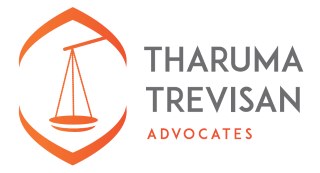
What You Need To Know About Rental Income Tax in Kenya
By Ian Njathi
(LL.B., LLM, Dip in Law)
1. What is rental income tax?
1.1. Rental income refers to the usually fixed periodical payments made by a tenant or occupant of property to the owner or landlord for the possession or use of the property. The income, for the purposes of tax could form part of the core business of a resident or could be incidental to the core business of the person. If the rental income forms part of several other sources of income, the Income Tax Act provides that it will be taxed as a separate source of income.
1.2. Residential rental income tax falls under the scope of section 3(2)(a)(iii) of the Income Tax Act which provides that income arising from a right granted to another person for the use or occupation of property constitutes income chargeable under tax. Following this categorization, Residential Rental Income Tax (RRIT) thus refers to the tax paid by a resident person on the rental income gained for the use or occupation of a residential property.
1.3. The RRIT was introduced by the Finance Act of 2015 which amended the Income Tax Act of 2015 through Section 6A which imposed a residential Income Tax that took effect on 1st January 2016. The Tax is payable by any resident person from rental income accrued or derived in Kenya for the use or occupation of residential property which is in excess of Ksh. 144,000 but does not exceed Ksh. 10,000,000 during any year of income.’
2. What is the tax rate for Residential Rental Income Tax (RRIT) ?
2.1. The RRIT is a final tax payable on a monthly basis and applies to income not falling below Ksh. 144,000 (Ksh. 12,000 monthly) and does not exceed Ksh. 10,000,000 per annum. Should income fall below or go over and above the allowable limits above, the landlord is required to file income tax returns and declare his rental income together with income from other sources.
2.2. RRIT is charged at a flat rate of 10% on Gross Rent received and is payable when landlords receive payments from their tenants either monthly, quarterly, semi-annually or annually. However, the returns must be filed monthly.
2.3. Under the Income Tax Act, expenditure incurred in the production of rental income is an allowable expense owing to Section 15 which provides that for the purpose of ascertaining the total income of person for a year of income, all expenditure wholly and exclusively incurred in the production of that income in such year of income, shall be deducted. Such allowable expenses include:
2.3.1. For the owner of the premises, any amounts used for structural alterations to the premises necessary to maintain the existing rent save for alterations for extension or replacement of the premises.
2.3.2. Expenditure incurred by a lessee in case of a lease or similar transaction
2.3.3. Interest paid in respect of money borrowed wholly or exclusively for production of investment income
2.3.4. Land rent and rates
2.3.5. Agent fees
2.3.6. Ground keepers expenses
2.3.7. Insurance
2.3.8. Such other expense as provided for under schedule 2 of the Income Tax Act
3. How is Taxable income determined?
3.1. The RRIT payable is determined by the Gross Rental Income less Allowable Expenses. For example, Mr. X has 3 rental properties that accrue Kshs. 25,000, Kshs. 35,000 and Kshs. 40,000 per month. He pays land rent /rates for Kshs 15,000, Insurance Kshs 15,000 and Ground Keeper fees for Kshs 5,000. In order to calculate the monthly RRIT payable, all rent acquired from the properties that is, Kshs 100,000 less the allowable expenses standing at Kshs. 35,000 to arrive at the Net taxable income of Kshs. 65,000.
4. How is rental income filed and paid
4.1. RRIT is filed on or before the 20th of the following month through the iTax system by declaring the gross rent and the tax payable will be computed automatically using the 10 % rate.
4.2. Where the landlord does not receive any rent for a given month, they are required to file a nil return on the iTax Portal. Since RRIT is a final tax, persons are not required to declare it in their annual income tax returns.
5. Penalties for late filing and payment.
5.1. Failure to file RRIT in the specified time that is on or before the 20th of every month attracts penalties on landlord at the rate of Ksh 2,000 or 5 % of the tax due, whichever is higher for individuals and Kshs. 20,000 0r 5% of the tax due, whichever is higher for corporates.
5.2. Additionally, failure to pay tax due as and when it falls due attracts a penalty at the rate of 5% and a late payment interest of 1% per month on the unpaid tax until the tax is paid in full.
6. Exemptions.
6.1. RRIT is exempted from non-resident tax payers, Section 3 of the Third Schedule of the ITA provides that income in respect of rent, premium or similar consideration for the use or occupation of immovable property will be chargeable to tax at a rate of 30% of the gross amount payable. Additionally, non-residents are not entitled to deduct any expense to arrive at a taxable income. The Tax is collected under the Withholding Tax (WHT) mechanism of the tenant.
6.2. Another group exempt from payment of RRIT are landlords earning more than Kshs. 10,000,000. They are required to include it with other incomes while filing for income tax.
6.3. Taxpayers wishing to be included in the current tax regime on rental income may write to the commissioner expressing their interest and will thus be exempted from paying RRIT.
6.4. It should be noted that there is a distinction between Commercial Rental income and Residential Rental income for tax purposes in that Commercial Rental Income attracts Value Added Tax (VAT) under the VAT Act 0f 2013 whereas Residential Income Tax does not.
Latest Posts
Step by Step Guide to Subdvision of Land in Kenya
Agnetah Muli LL. B, KSL Dip. What is Subdivision? The process of subdivision involves the division of land into two or more parcels. The purpose is to...
COMPREHENDING REDUNDANCY IN EMPLOYMENT LAW – KENYA
“Fairness in all forms of termination is the staple of labour law”- Anon By Quincy Jesse Kiptoo LL.B. (Hons), CPM, Dip in Law The word Redundancy...

